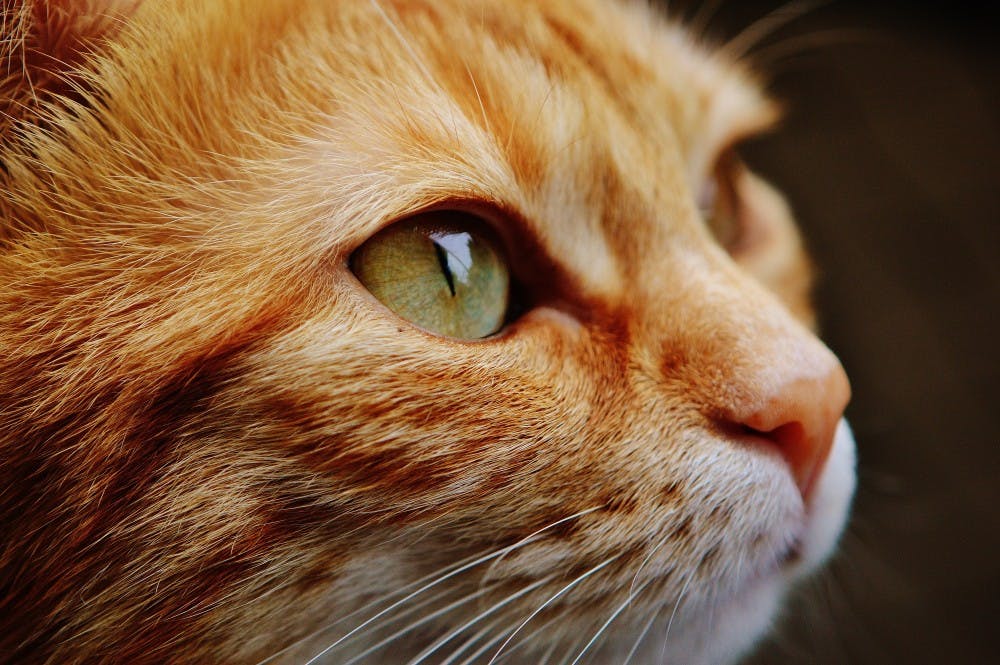Penn Scientists Spent $16 Million Trying to Create a Real-Life Puss in Boots. How Did It Go So Wrong?

Photo from Pexels / CC0
November 27, 2017 at 1:07 am
Three years ago, Penn was forced to shut down its controversial and expensive Rodent Decision Laboratory when it came to light that four million dollars had been spent on cocaine for rats, who had formed fraternities and built sweet houses inside their mazes. The rats were partying and not even trying to complete any objectives. Now, Penn is in hot water again for "irresponsible" spending and "unethical" experimentation on animals.
The Penn Puss in Boots experiment started off small. Dr. Charles Hegazy, who holds a PhD in cinema studies from UCLA, first just intended to slap some boots on a cat and see what happened. "It got out of hand," he told UTB in a recent interview. "I can't believe it got this bad."
An investigation conducted over the last three months by UTB found a series of shocking, ill-advised decisions that added up to millions of dollars and left dozens of bipedal, sword-wielding cats floundering in its wake.
Sources within the university say that things changed when President Amy Gutmann saw Dr. Hegazy's cat and declared it "the cutest thing." President Gutmann quickly approved funding for a larger project to outfit the cat not just in boots but also in a small hat, cape, and belt with a sword, as the character Puss in Boots appears in the Shrek franchise and his own spinoff film and TV show. But President Gutmann only approved one million dollars for these items, not 16.
An anonymous source who worked on the Puss in Boots experiment explained the runaway costs and exponential growth of the project. "Quickly it became clear that just buying costumes for a cat wasn't enough. Gutmann and the Board of Trustees wanted multiple cats that walked like the character, talked like the character, even fought like the character. They wouldn't accept that it was an anthropomorphic cat from a children's movie."
The project required major genetic modifications to feline subjects, engineering their fur to be lighter in certain places to create the appearance of eyebrows and facial hair and strengthening their hind legs and spines to allow for prolonged bipedal standing. The cats were made extremely intelligent, as well, so that they could learn to speak, walk, and fight with swords. Real swords, sharp enough to kill. A program started to clothe a professor's cat had turned into an experiment to test the limits of human science, to assert man's dominance over nature itself. As the scope of the project expanded, so did its budget.
The experiment ended as all such experiments do. One cat escaped the lab and found his way to the ASPCA, where he explained that Penn had created a group of hyper-intelligent cats and was keeping them imprisoned to train as warriors, sometimes forced to kill one another like modern-day gladiators.
Cat U4, as he was named in the lab, told UTB that the blood on his paws made it hard to move on. He sounded, as one might expect, just like Antonio Banderas.
The psychological effects of the experiment on the cats is being studied. When they were freed from their holding cells, the cats in question found that they didn't fit in with regular cats (they are too smart) nor with humans (they are cats). Many had killed other test subjects during their training.
"We're hoping we can find some ogres and anthropomorphic donkeys in the area to give them a home," a representative of the ASPCA said. "If that fails, I guess we'll just have to hope someone makes a live action sequel to the 2011 DreamWorks film, Puss in Boots. That's the only thing we have thought of so far."